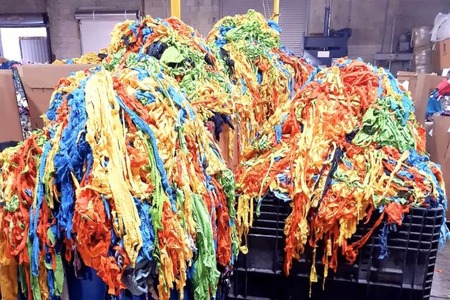Indian apparel exports likely to reach $20bn by 2016
YarnsandFibers News Bureau 2015-10-19 17:00:00 – MumbaiIndia's apparel exports supported by the expectations of increase in the global apparel trade and partly due to benefits of depreciated Indian rupee in 2015 are likely to increase to $18 billion and to $20 billion in 2016 as against $16.5 billion in 2014, according to a report from investment information and credit rating agency ICRA.
However depreciated rupee is unlikely to remain as a sustainable advantage in long-term as India's market share in world's trade has not significantly changed despite depreciation of Indian rupee during last three years, it said in a statement.
India's share in the global apparel trade has remained modest with a share of just four percent last year which has increased only marginally from a share of three percent in 2004.
The report said that while China, Bangladesh and Vietnam were able to realize the benefits of the new trade arrangement (WTO's agreement on textile and clothing) thereby increasing their share in global apparel trade substantially, India's share had remained modest.
China is the largest apparel exporter on account of the largest global capacities across the textile value chain; however, the share of India had remained modest despite India being amongst the largest producer of cotton and man-made fibre and having the second largest capacity for spinning and weaving.
Fragmented nature of the weaving, processing and garmenting industries with low levels of modernization, higher cost of production, modest share of non-cotton apparel and reliance on imported machineries across the textile chain have been the key factors which had constrained growth in India's apparel exports.
But with growth in the economy and rising income levels, it is expected to maintain the growth rate over the medium term. As per the findings, the domestic apparel market has grown at a mean annual growth rate of 10 percent over the last five years.
The government's earlier policy of reserving the weaving and apparel sectors for the small scale units which had specified cap on investments in plant and machinery had been one of the reasons for the fragmented nature of the industry, said the report.
The benefits of the government's flagship programme for textile sector upgradation - Technology Upgradation Fund Scheme (TUFS) - has been largely availed by the spinning sector with downstream sectors (weaving, processing and garmenting) witnessing limited participation.
With revision in TUFS in October 2013 which focus on investments in downstream sectors, there have been increased investments there.
Market Intelligence
Ask for free sample Report

experience
Customer Base
dedicated team
Countries Served Worldwide









